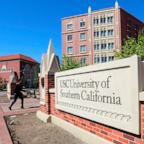NASA's 'Flying Saucer': What Went Wrong
Officials share what happened during Low-Density Supersonic Decelerator test.
— -- Don't write it off as a total failure.
NASA officials gave a briefing today on Monday's test flight of the Low-Density Supersonic Decelerator, better known as the flying saucer, which could one day help a spacecraft land smoothly on Mars.
Despite high hopes for the spacecraft's newly designed supersonic parachute, it deployed but did not properly inflate during its test on Monday, giving engineers plenty of data to sift through to find out what went wrong.
"[With] this project we are pushing the limits of our technologies," Ian Clark, the principal investigator for the Low-Density Supersonic Decelerator said today in a NASA teleconference. "This year the physics of supersonic parachutes pushed back on us."

Clark described creating a nylon and kevlar parachute equipped to withstand speeds several times that of sound as a challenge -- but said the learning experience on Monday was a positive due to the loads of new data it yielded for engineers.
"We had a parachute that did not survive inflation and we're going to have to look at that data and see what happened," he said. "We very much want to have those failures occur here on our testing on Earth" rather than on a mission to Mars.
The vehicle has performed well during tests with the exception of its parachute, which was also problematic during a test last year. Another flight is planned for 2016, NASA officials said.
The flying saucer's decelerator technology could one day help NASA land heavier loads on Mars, giving astronauts on a potential future mission the supplies they will need on the red planet.




